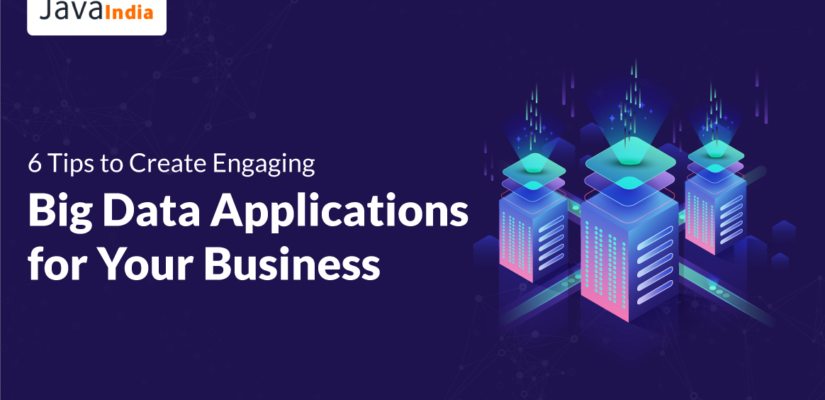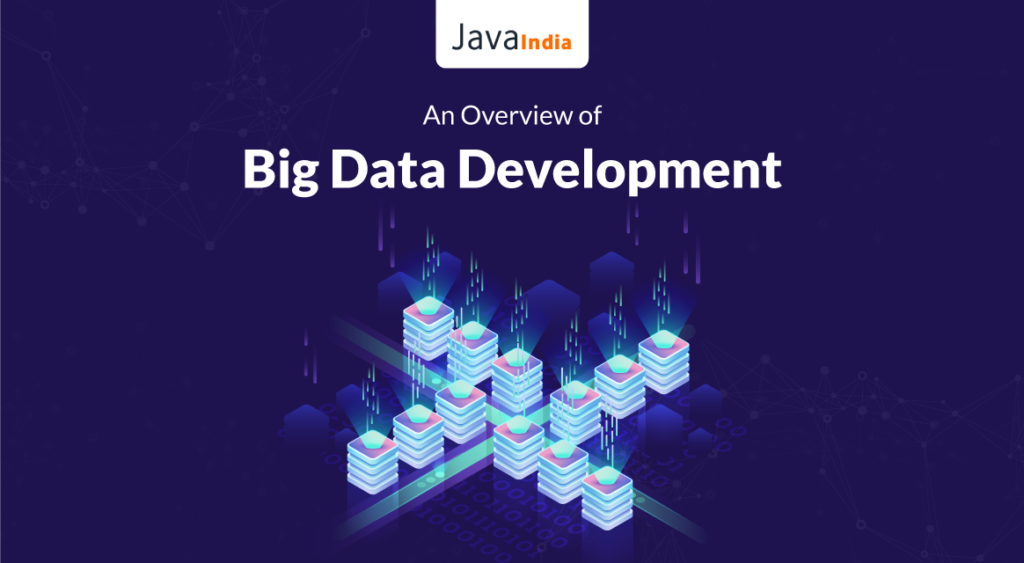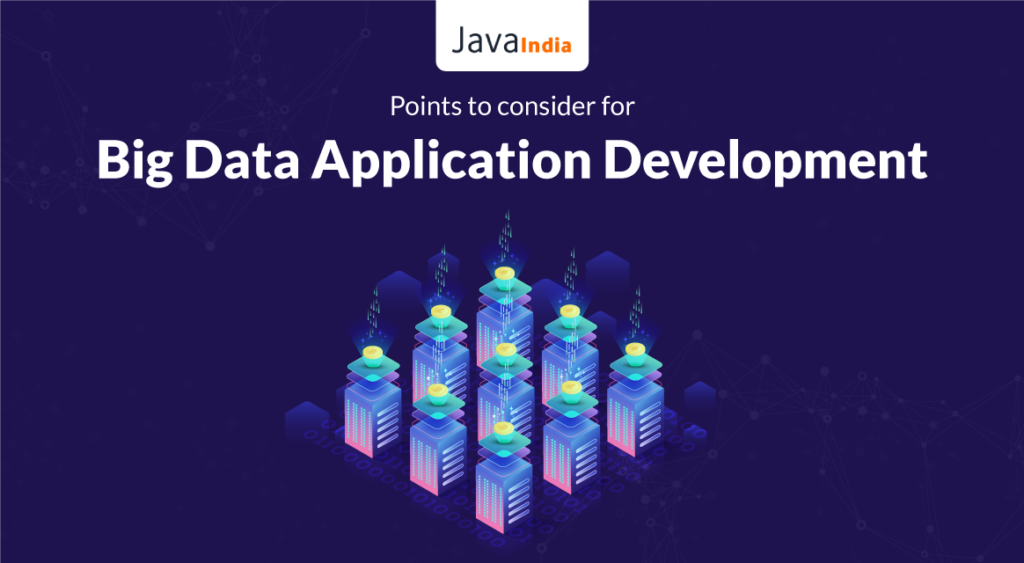
6 Tips to Create Engaging Big Data Applications for Your Business
Businesses manage millions of data from many sources and consumers. And handling this different data from many sources is a complex endeavor. But how can they provide reliable data handling and insights? And here we have big data. Because it enables you to collect data and transform it into meaningful insights. It is quickly becoming popular in many businesses to manage their operations. And if you want to implement it too, let’s dive in.

An Overview of Big data development
Big data contains various data in velocity and is stored in volumes. That sounds simple! Big data manages data sets from disparate data sources. And, it addresses all the potential business overheads. Big data development is more complex than you think. Let’s look at its crucial V’s.
The three V’s of big data
Here are the three V’s of big data to manage various businesses.
Volume
There are voluminous amounts of data in big data, mostly unstructured data. So, it can be from social media channels, clickstreams, or sensor-based data. But it can be Tonnes for one firm but hundreds for others.
Velocity
The rate at which data you receive directly to memory. So, the velocity of data also works as critical V’s of data. And they will require action as per their time evaluation.
Variety
Data can be in any form or of any type. Traditional data types contain data that can be unfiltered or unstructured. Big data development consolidates every form of data.

Points to consider for big data application development
Here are some pointers that you must follow with big data.
Unique title
Don’t treat big data development like any other system or app. Because big data doesn’t use readymade apps instead contain various forms. Businesses may need this type of data to satisfy their needs. Now, in this case, every firm possesses different data to satisfy different needs. Because the uniqueness of big data applications can’t be taken for granted by the firms.
So, the developers should refine and manage data that works for them. Moreover, it also increases the firm’s responsibility to clean the data. And, developers need to be determined and value-driven for this daunting task.
Bold strategy
Having defined objectives helps you comprehend your final goal. So, attempt to set these objectives from the outset of the project. Because you can then focus on users, business, and market trends. However, in big data, the data goals are something blurry. So, firms try to gather these insights to implement the strategy.
You can consult Java frameworks for web development for more assistance. Although, the insights are certain at the beginning of the project. Rather, developers can help to make an end goal to manage the unclear data. Moreover, building an insightful strategy is a great way to thrive in a competitive world.
Small start
As the name suggests, big data is big. But you don’t have to load your data all at once. As IoT surges with the integration of technology to gather the desired data. Large projects need Tonnes of data and big data comes into play. However, developers help businesses to thrive with their various data sets. You can consult big data development services for more assistance.
So, the best strategy is to piggyback the data pool to support the data whenever needed. Plus, starting with a small data set can help you manage a huge volume of datasets.
User-centric
Big data includes creative management of IT projects for users. And developers play a crucial role to ensure systems are flexible. So, the simplest idea is to build sandboxes and platforms. Because it helps to streamline the work of data scientists and analysts. Plus, ensure the integration of advanced tools and data segmentation techniques.
As it integrates faceted search into your website. You can consult big data development services for more assistance. But earlier DBMS was used to collect data in systematic and hierarchal ways. And, now faceted method helps to access and order these data. You can ease the complete big data system with annotation tools. So, that it can generate insights from various interactions. And this helps to streamline your business operations.
Interface design
The success of any big data development interface design impacts your employee’s information. So, converting complex data sets into insightful analytics. Moreover, developers should make these application design interactive and design. Because it directly impacts employee engagement and is easy to explain. Although developers collaborate with data scientists to adjust formulae.
Because they need to think about end users because they aren’t so technically sound. So, they filter data and present it in a user-friendly way. Moreover, visually appealing sites are gaining user trust and interest. And it is a direct demand for an increase in UI designers.
Performance driven
Employees use big data apps for quick responses with zero delays. Even when they use millions of data records to fetch results. So, the developers ensure streamlined performance in big data apps. As they oversee I/O, systems, big data apps, etc. So, they have cleaned and managed to cut down the additional overheads. Firms with various DBMS categorize and manage data as per needs. Developers ensure data should be streamlined, cleansed, and managed.
And the data source has to be near the changed data to eliminate additional traffic. You can consult Java web development for more assistance. Storage also impacts performance because it changes quickly with the size. And, it increases the developer’s burden but qualifies the data. Because it can separate the stale data from the new versions to avoid any traffic.
Conclusion: Big data may appear difficult, but with the right method, you can have it all. The preceding are some essential recommendations for ensuring efficient big data application development. For more consideration, consult big data development services for your projects.
FAQs
What are the big data challenges?
- Storage
- Processing
- Security
- Scaling
- Data Quality
What exactly are big data tools?
A big data tool is a software that takes information from diverse sorts and sets of complicated data and then processes it to deliver relevant insights.
What are the four big data risks?
Big data hazards are broadly classified into four categories: security concerns, ethical concerns, and malicious exploitation of big data by malicious actors.

